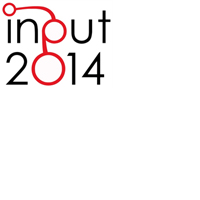Li-Fi for a Digital Urban Infrastructure: A Novel Technology for the Smart City
Abstract
The process of “building a smart city” implies that the way a urban area provides its traditional functions be properly re-designed, in order to meet the often conflicting requirements of furthering the economical development and of improving the quality of the life. ICT can make available methodologies and tools able to support such process, as far as the new solutions are carried out within a global vision of the task to be carried out i.e. within a system approach. In such context, even traditional infrastructures as the streetlamp system of a city can reveal interesting opportunities, when coupled with updated technologies. Here, the potential benefits of moving to the LED technologies are presented. The relevance of Li-Fi technology is pinpointed. in relation to the ability of efficiently install wireless links for data transfer without increasing (or also reducing) the microwave background in a urban area. Also the data collection can be improved leveraging upon the already installed streetlamps: the ever increasing amount of sensors (required for many functions, from street security to environment protection) can be deployed without further waste of urban 3D space.Downloads
References
Annunziato M. (2012). La roadmap delle smart cities. Energia Ambiente e Innovazione, 4-5, 32-42.
Batty M, Longley P. (1994). Fractal Cities - A Geometry Form and Function. London UK: Academic Press.
Bonomi A., Masiero R. (2014). Dalla smart city alla smart land. Venezia IT: Marsilio.
Borga G. (2014). City Sensing. Milano IT: Franco Angeli
CREE (2013). Cree XLamp XM-L Led Data Sheet . Cree, Inc. http://cree.com/LED-Components-and-Modules/Products/XLamp/Discrete-Directional/XLamp-XML
Daukantas P. (2014). Optical Wireless Communications: The New “Hot Spots”?. Optics and Photonics News, 25.
Dutta S., Sharma K., Gupta N., Lovedon Bodh T. (2013). Li-Fi (Light Fidelity) - A New Paradigm in Wireless Communication. Int. Journal of Innovative Research in Computer and Communication Engineering; 1(8), 1654 – 1658.
Fistola R. (2001). Planning the Digital City (the rising up of the M.E-tropolis).In: Schrenk M. (ed.), Proc. of the 6th Symposion on Information Technology in Urban- and Spatial Planning and Impacts of ICT on Physical Space, 14 – 16 February 2001. Vienna AT: TUWien, Dept. of Computer-aided Planning and Architecture (pp. 359 – 363).
Forrester J. W. (1969). Urban Dynamics. Cambridge MA: MIT Press.
Gargiulo C., Pinto V., Zucaro F. (2013). EU Smart City Governance. TeMA Journal of Land Use Mobility and Environment, 3, 355-370.
Gebhart M., Leitgeb E., Al Naboulsi M., Sizun H., de Fornel F. (2004). Measurements of light attenuation at different wavelengths in dense fog conditions for FSO applications. COST 270 Short Term Scientific Mission 7 Report .
Iannucci C., Pini F. (2013). Tecnologie di prossimità per la fruizione di informazione georeferenziata. In: Atti della 17a Conferenza Nazionale ASITA, Riva del Garda, 5 – 7 novembre 2012. (pp. 831 - 836). Milano IT: ASITA
Lojacono R., Pini F., Angelucci S., Iannucci C. (2009). GPS, modernizzazione del servizio commerciale. Elettronica Oggi, .386, 84-87.
Mc Loughlin J.B. (1969). Urban and Regional Planning. A System Approach. Padova IT: Marsilio.
Manyika J., Chui M., Brown B., Bughin J., Dobbs R., Roxburgh C., Byers A. H. (2011). Big data: The next frontier for innovation, competition, and productivity. San Francisco CA: McKinsey Global Institute.
Nam T., Pardo T. A. (2011), Conceptualizing Smart City with Dimensions of Technology, People, and Institutions. In: Bertot J. C., Nahon K., Chun S. A., Luna-Reyes L. F., Atluri V. (Eds.), Proc. of the 12th Annual Int. Conf. on Digital Government Research, DG.O 2011, College Park, MD, USA June 12 – 15, 2011. New York NY: ACM.
NREL (2014), Best Research Cell Efficiency, National Renewable Energy Laboratory. http://www.nrel.gov/ncpv/images/ efficiency_chart.jpg
Papa R., Gargiulo C., Galderisi A. (2013), Towards an Urban Planners’ Perspective on Smart Cities, TeMA Journal of Land Use Mobility and Environment, 6(1), 5-17.
Pini F. (2010). Mobile Internet: dal GSM all’LTE passando per l’UMTS e HSDPA. Diritto ed Economia dei Mezzi di Comunicazione, 2 (123-133).
Rani J., Chauhan P., Tripathi R. (2012). Li-Fi (Light Fidelity)-The future technology In Wireless communication. Int. J. of Applied Engineering Research, 7(11).
Sharma R. R., Raunak A., Sanganal A. (2014). Li-Fi Technology. Transmission of data through light. Int. J. Computer Technology & Applications, 5(1),150 -154
UNDESA (2012), World Urbanization Prospects, the 2011 Revision. New York, NY: United Nations, Department of Economic and Social Affairs, Population Division.
UNDESA (2013), World Population Prospects: The 2012 Revision, Key Findings and Advance Tables. Working Paper No. ESA/P/WP.227. New York, NY: United Nations, Department of Economic and Social Affairs, Population Division.
UNFPA (2007), The State of World Population 2007. Unleashing the Potential of Urban Growth. New York, NY: United Nations Population Fund.
US DoE (2012). Solid-State Lighting Research and Development: Multi-Year Program Plan. Washington DC: Dept. of Energy. http://apps1.eere.energy.gov/buildings/publications/pdfs/ssl/ssl_mypp2012_web.pdf
US DoE (2013). Solid-state Lighting Technology Fact Sheet . Washington DC: Dept. of Energy. http://apps1.eere.energy.gov/buildings/publications/pdfs/ssl/led_energy_efficiency.pdf2013).
UP-VLC (2012). Ultra-parallel visible light communications (UP-VLC) project. http://up-vlc.photonics.ac.uk/.

Copyright (c) 2014 Tema. Journal of Land Use, Mobility and Environment

This work is licensed under a Creative Commons Attribution 4.0 International License.
Authors who publish in this journal agree to the following:
1. Authors retain the rights to their work and give in to the journal the right of first publication of the work simultaneously licensed under a Creative Commons License - Attribution that allows others to share the work indicating the authorship and the initial publication in this journal.
2. Authors can adhere to other agreements of non-exclusive license for the distribution of the published version of the work (ex. To deposit it in an institutional repository or to publish it in a monography), provided to indicate that the document was first published in this journal.
3. Authors can distribute their work online (ex. In institutional repositories or in their website) prior to and during the submission process, as it can lead to productive exchanges and it can increase the quotations of the published work (See The Effect of Open Access)
